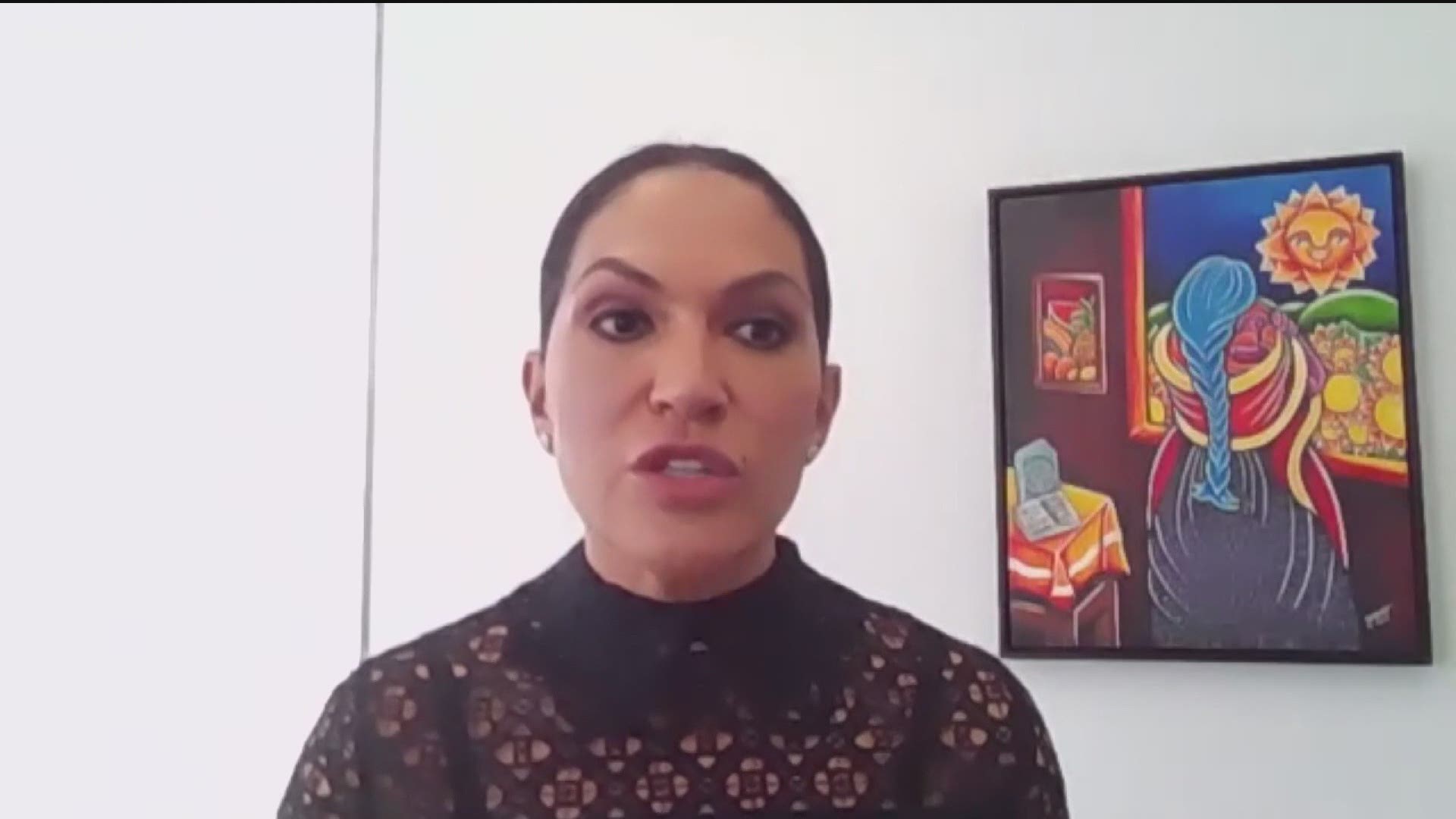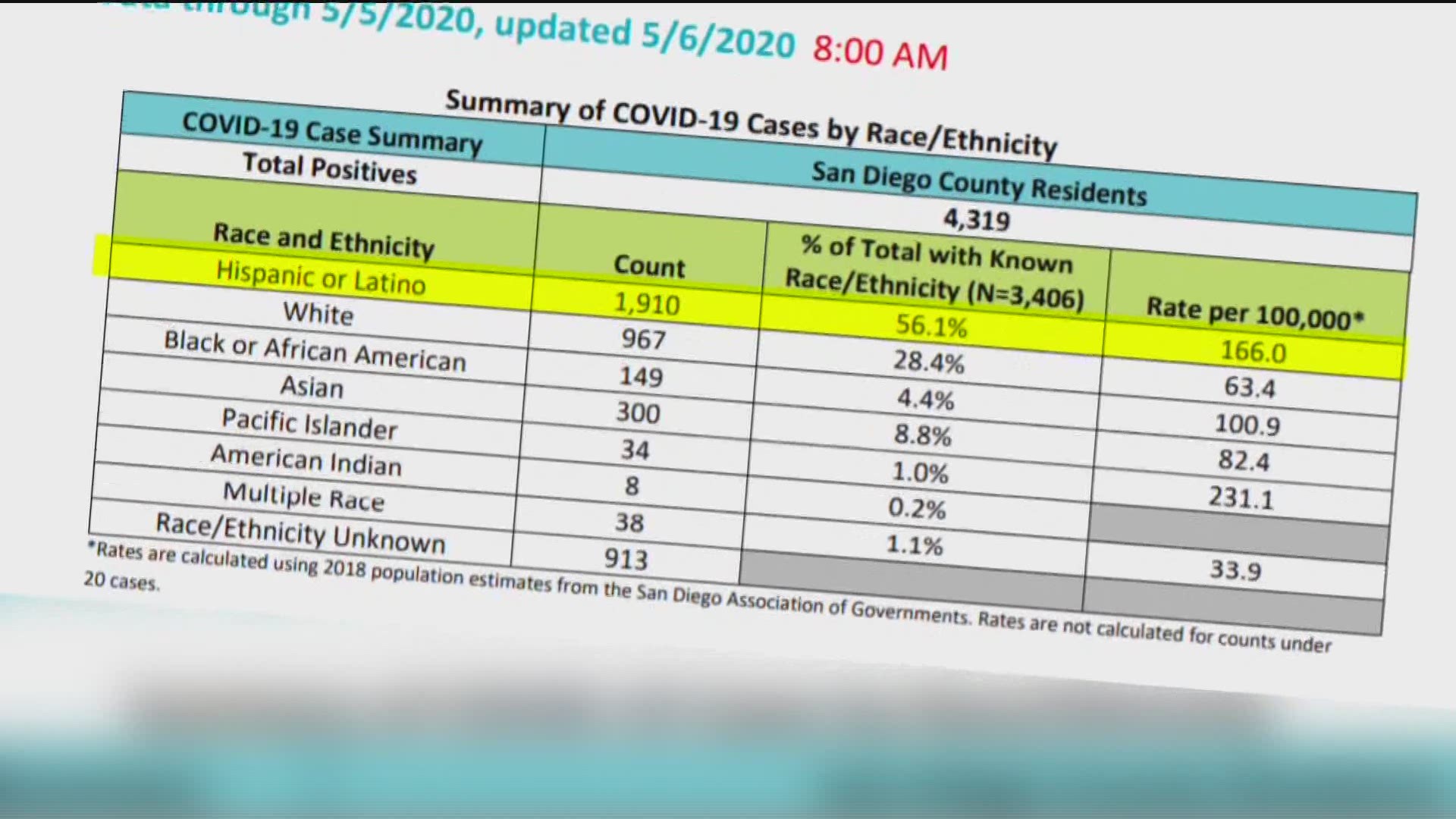CHULA VISTA, Calif. — California’s new set of guidelines will measure the impact coronavirus has on some of the county's communities of color and will determine which tier for placement.
Nancy Maldonado, the President and Chief Executive Officer of Chicano Federation of San Diego County, applauds the state’s effort, but also said due to the devastation many communities have already have experienced, the metric move may be a little too late.
"Of course it's too late and comes a little late, but moving forward, this is one step to ensuring that we come out of this more equitably,” Maldonado said.
"A step in the right direction" is how Maldonado describes California's new health equity metric.
"We had a call with the Governor's office in June and talked about establishing something like this, so when we saw this come through and saw that he had actually put this into the policy, we think this is a really great idea," said Maldonado.
The metric will only be used to help a county move to a less restrictive tier and allow for the reopening of more sectors of the economy. Counties with low disparities will move quicker through the tier system while counties with large disparities will move slower.
"The new health equity metric incentivizes counties to decrease infections across every neighborhood,” said Dr. Wilma Wooten, San Diego County's public health officer.
Dr. Wooten said the new metric will help the county better identify where it should expand outreach, offer testing and invest in resources to lower infection rates.
"We need to ensure that all communities and our essential workforce have access to testing to treatment and have protections in place," Wooten said.
Statewide, Latinos account for 61% of all coronavirus cases and almost half of all COVID-19 deaths.
"We're thinking about these front line workers. We're thinking about Black and brown communities and the impact on them. When the county chose to move forward with the reopening back in May, it was an accelerated reopening. We were very critical of that. We spoke out against it because we knew who would be on the front lines, and sure enough, we had to scale back because the infection rates went up,” Maldonado said.
The health equity metric is based on the county's HPI, or Healthy Places Index. In San Diego, the metric this week is 6.2%, far higher than the county's overall testing positivity rate of 3.5%. For San Diego County to move to the less restrictive orange tier, it would need to have a case rate of less than four cases per 100,000 people over a seven-day period for two consecutive weeks.
"If we're not focusing the resources and the testing and the education on the communities that are being most impacted, then we're not going to move forward,” Maldonado said.
The California Health Department assesses the county weekly and will have the next report out on Tuesday, Oct. 13.


